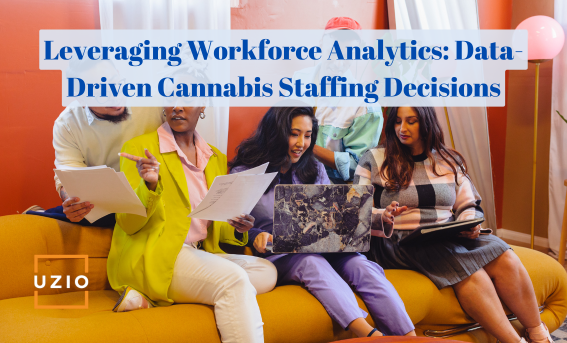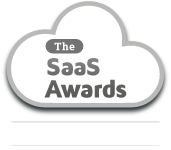Quick links
- Introduction: The Importance of Data in Cannabis Staffing
- Leveraging Workforce Data for Smarter Hiring Decisions
- Optimizing Shift Scheduling with Data Insights
- Predictive Analytics for Hiring Decisions
- Optimizing Shift Scheduling with Workforce Data
- Retention Strategies Backed by Workforce Insights
- Conclusion: The Future of Cannabis Workforce Optimization
1. Introduction: The Importance of Data in Cannabis Staffing
The cannabis industry operates in a highly regulated and dynamic environment, presenting unique challenges for staffing. Unlike other industries, cannabis businesses face fluctuating demand, strict compliance requirements, and workforce turnover rates that are often above average. These challenges make effective workforce management crucial to the success of any dispensary or cannabis operation.
Workforce analytics offers a solution by transforming payroll and HR data into actionable insights. These insights enable dispensary owners and HR managers to make informed decisions about hiring, scheduling, and retention, tailored specifically to the unique needs of the cannabis sector.
Key Points Highlighted in This Blog:
- How compliance challenges make data-driven staffing a necessity.
- The role of analytics in predicting seasonal demands like 4/20 and holiday peaks.
- Insights on reducing turnover and boosting retention in cannabis-specific roles.
By adopting workforce analytics, cannabis businesses can not only optimize their operations but also ensure compliance and sustainability in a competitive market.
2. Leveraging Workforce Data for Smarter Hiring Decisions
In the cannabis industry, hiring isn’t just about filling roles—it’s about meeting strict compliance requirements while ensuring that employees are well-suited to handle the unique demands of the sector. Workforce analytics can help dispensary owners and HR managers make smarter hiring decisions by analyzing trends, skill gaps, and labor market insights specific to cannabis operations.
Key Applications of Workforce Analytics in Hiring:
Identifying Role-Specific Skill Sets: Analytics can help highlight skills most critical for specific roles, such as compliance expertise for budtenders or inventory management for warehouse staff.
Predicting Staffing Needs: By examining historical data, businesses can predict staffing requirements for peak periods like 4/20 or product launches, ensuring the right number of employees are available without overstaffing.
Evaluating Candidate Fit: Workforce analytics can integrate with applicant tracking systems (ATS) to identify candidates with prior experience in cannabis or other regulated industries, improving the quality of hires.
Compliance Assurance: Hiring in the cannabis sector requires careful vetting to ensure employees meet legal standards. Analytics can assist in tracking required certifications or background checks, reducing the risk of non-compliance.
3. Optimizing Shift Scheduling with Data Insights
Effective scheduling in cannabis operations goes beyond basic time management. Dispensaries and grow facilities need to align shifts with compliance requirements, customer demand, and employee well-being. Workforce analytics provides actionable insights that make scheduling a strategic tool rather than a logistical headache.
Data-Driven Strategies for Scheduling:
Demand Forecasting: By analyzing sales data, dispensaries can anticipate high-traffic periods and schedule staff accordingly, ensuring adequate coverage during peak hours while avoiding overstaffing during slower periods.
Compliance-Friendly Schedules: Cannabis businesses must meet state and local labor laws, including overtime regulations. Workforce analytics can flag potential violations before schedules are finalized, minimizing compliance risks.
Employee Preferences and Productivity: Analytics tools can consider employee shift preferences and performance metrics to build schedules that enhance productivity and reduce burnout.
Cross-Training Opportunities: Identify employees with overlapping skills and schedule them for critical times or roles. This reduces dependency on a single employee and ensures business continuity.
4. Predictive Analytics for Hiring Decisions
The cannabis industry faces unique challenges in recruitment due to high turnover rates, evolving compliance requirements, and the need for specialized roles. Predictive analytics leverages historical data to guide smarter hiring decisions and optimize recruitment efforts.
Key Applications of Predictive Hiring Analytics:
Identifying Retention Trends: Analyze employee tenure data to pinpoint the roles with the highest turnover rates and uncover reasons for attrition. Use these insights to refine job descriptions, improve onboarding processes, and set realistic expectations for new hires.
Forecasting Workforce Needs: Predict seasonal or market-driven surges in staffing demands based on sales and customer traffic data. This ensures dispensaries are not understaffed during high-demand periods or overstaffed during lulls.
Candidate Scoring Systems: Evaluate past hiring successes and failures to create data-driven candidate scoring models. Focus on factors like skill alignment, cultural fit, and previous industry experience to prioritize high-potential candidates.
Compliance in Hiring: Leverage analytics to ensure hiring practices meet regulatory requirements, particularly when onboarding individuals for roles involving controlled substances.
5. Optimizing Shift Scheduling with Workforce Data
In cannabis dispensaries, efficient shift scheduling is critical to meeting customer demands while maintaining compliance with labor laws. By leveraging workforce analytics, dispensaries can create data-driven schedules that boost productivity, reduce overtime costs, and enhance employee satisfaction.
Key Benefits of Data-Driven Scheduling:
Demand-Based Scheduling: Use sales and foot traffic data to predict peak hours and schedule more staff accordingly. Conversely, scale down staffing during slower periods to optimize labor costs.
Fair Workload Distribution: Analytics can identify employees who are consistently over- or under-scheduled. Dispensary managers can use this data to ensure equitable shift distribution, reducing burnout and improving morale.
Absenteeism and Overtime Management: Track patterns of absenteeism and excessive overtime to identify potential issues. With this insight, managers can address underlying problems, such as fatigue or lack of adequate staffing.
Real-Time Adjustments: Integration with point-of-sale (POS) and attendance systems allows managers to make real-time scheduling adjustments based on unexpected demand or staff availability.
Table: Example of a Data-Driven Scheduling Framework
| Metric | Data Source | Scheduling Insight | Action |
|---|---|---|---|
| Peak sales hours | POS system | Identify busiest times of day | Schedule additional staff for peak hours |
| Employee availability | HRIS/Time tracking | Ensure availability matches shift requirements | Adjust shifts to align with availability |
| Overtime hours per employee | Payroll data | Highlight potential overwork or understaffing issues | Rotate staff to balance workloads |
| Absenteeism rates | Attendance records | Identify employees with frequent absences | Address concerns or hire additional staff |
6. Retention Strategies Backed by Workforce Insights
High turnover is a significant challenge in the cannabis industry due to the demanding nature of the work and the dynamic regulatory environment. Workforce analytics offers actionable insights to design strategies that enhance employee retention, ensuring dispensaries remain fully staffed and productive.
Key Strategies for Retention Using Workforce Analytics:
Identify At-Risk Employees: Analytics can pinpoint employees showing signs of disengagement, such as decreased productivity, frequent absences, or minimal shift requests. Early intervention can prevent turnover by addressing their concerns.
Tailored Training Programs: Data on skill gaps and performance metrics allows dispensaries to offer targeted training programs that upskill employees and improve job satisfaction.
Competitive Compensation Analysis: Use payroll data to benchmark salaries against industry standards, ensuring pay scales remain competitive. This step not only improves retention but also attracts top talent.
Employee Satisfaction Metrics: Collect and analyze data from employee surveys to identify areas of dissatisfaction, such as work-life balance or lack of recognition. Use this feedback to implement positive changes.
Career Progression Opportunities: Workforce analytics can track employee growth and suggest career progression plans, fostering loyalty and motivation among team members.
7. Conclusion: The Future of Cannabis Workforce Optimization
In the evolving cannabis industry, leveraging workforce analytics is no longer a luxury but a necessity. Data-driven decisions empower dispensaries to navigate unique challenges like compliance, scheduling complexities, and high turnover rates with precision and confidence.
By adopting a strategic approach to payroll and HR data, cannabis businesses can:
- Boost operational efficiency by aligning staffing needs with real-time demand.
- Improve employee satisfaction and retention through tailored benefits, training, and engagement strategies.
- Ensure compliance by staying ahead of regulatory requirements.
The cannabis industry is poised for significant growth, and those who invest in workforce analytics today will lead the way tomorrow. By using insights to build stronger, more adaptive teams, dispensaries can set the standard for success in this competitive market.
Recommended Reading: Biggest pain point with Payroll and HR software
Get in touch with us for an expert-led demo to know more about UZIO all-in-one payroll software.















